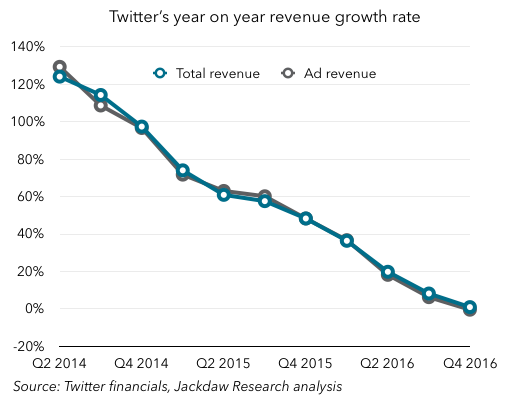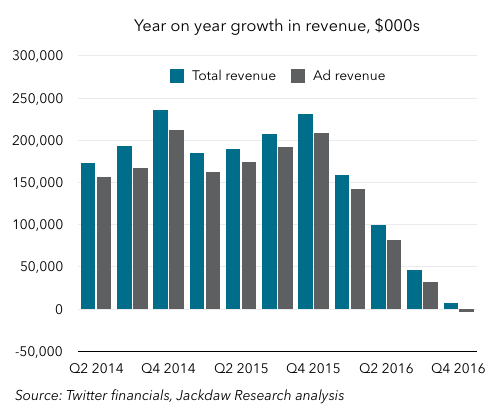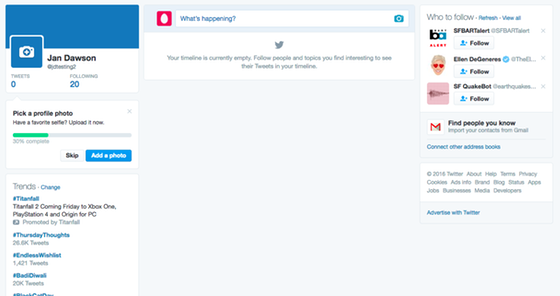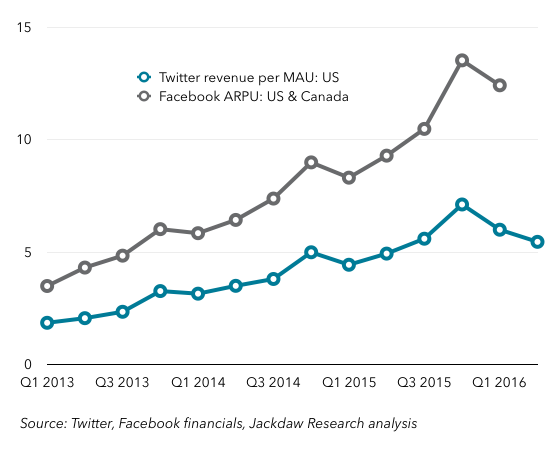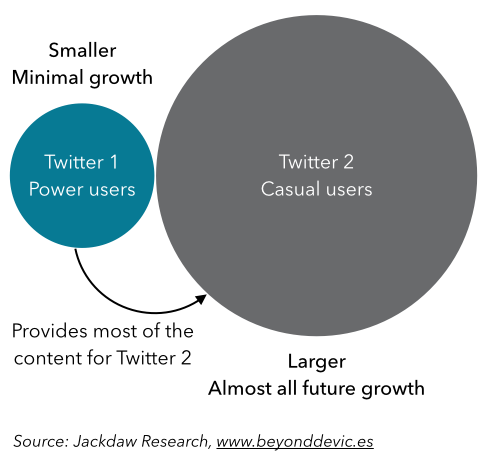Here we are, almost eleven years into Twitter’s history and a little over 18 months into Jack Dorsey’s second term at the company, and Twitter is heading for yet another reset. The company says it’s already been through a reset on its consumer-facing product, and that the changes it’s made are delivering results: positive year on year growth in daily active users, though Twitter still refuses to provide the underlying metric. It now says ad products need to go through a similar reset and re-focusing process. As a result of all this, the company isn’t even providing revenue guidance for Q1.
Here’s a quote from Twitter’s earnings call:
we remain focused on providing improved targeting, measurement and creative for direct response advertisers
Specifically, that’s from Twitter’s Q1 2015 earnings call, almost two years ago. But on today’s call, Anthony Noto said almost exactly the same thing again – some of this stuff has been in the works for over two years, and Twitter still doesn’t seem to be making meaningful progress. Rather, it’s now evaluating its direct response ad products to figure out which are delivering an appropriate return on the resources invested in them, with a view to killing some off.
Why is this all taking so long? It seems Twitter has been unable to focus on more than one big project at once, despite its arguably bloated workforce, and it’s hard to avoid the sense that this is mostly about management. It starts with Jack Dorsey, who is trying to run two public companies at once, but it continues with the next layer of management, where there’s been huge turnover in recent years and where product management seems to have been a particular challenge. It feels as though Dorsey at once wants to own product, because he has the authority of a founder in this area, but doesn’t really have the time to do it properly, which means both that things don’t get done and nominal heads of product get fed up.
The other big problem is that Twitter’s big competitors for direct response advertising – notably Facebook and Google – are just way better at this stuff than they are, and Twitter simply hasn’t made anywhere near enough progress here over the last few years. As a result, Twitter is enormously susceptible to competitive threats – its guidance for Q1 is so broad because there was a meaningful difference in competitive intensity between the beginning and end of January alone. Any company that can’t predict its revenue a quarter out with reasonable confidence because of the competitive environment is really struggling.
In the meantime, ad revenue is actually falling year on year, despite the modest MAU growth and apparent growth in DAUs. US ad ARPUs dropped 8% year on year in Q4, and total US revenue was down 5.3% despite flat MAUs. The supposed increased engagement simply isn’t translating into revenue growth. The revenue growth trend for Twitter as a whole is pretty awful:
In percentage terms, the growth rate has been falling since Q2 2014, but even in pure dollar terms, growth has been slowing for a year. The EBITDA guidance for Q1 suggests a pretty big drop in revenue in the quarter, extending the streak here.
What Twitter’s management said today in their shareholder letter and on the earnings call is that it will simply take time for the increased user growth and engagement to flow through, and that Twitter essentially has to convince advertisers that it’s making progress in getting users engaged. But advertisers don’t spend money because of user growth trends – they spend money because it’s effective, and stop spending where it isn’t. Twitter seems to have a fundamental issue convincing advertisers that money spent on the platform will actually pay off, and I don’t see that changing just because it tweaks some ad formats.
